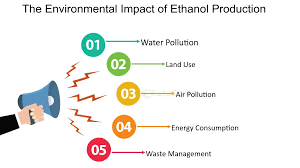| Topic: GS3 – Disaster – Disaster Management |
| Context |
|

Stampede At New Delhi Railway Station
- The recent stampede at New Delhi railway station on February 15 highlights systemic failures that are not due to a lack of resources but rather negligence.
- A stampede can be avoided by ensuring smooth movement, eliminating bottlenecks, and having adequate barricading and security personnel.
- These essential crowd control measures were ignored, leading to chaos.
Deeper Systemic Issues in Indian Railways
- Lack of Proactive Planning – Passenger surges during festivals and special occasions are predictable, yet Railways fails to implement preemptive crowd control measures.
- Information Dissemination Failure: Ineffective methods of conveying critical information to passengers regarding platform changes, delays, or crowd flow.
- Weak Crowd Management – No effective mechanisms such as separate entry and exit routes, controlled access points, or real-time monitoring exist to regulate large crowds.
- Inadequate Security and Personnel – Insufficient deployment of Railway Protection Force (RPF) personnel and lack of coordination among railway staff during peak travel times.
- Overburdened Staff: Insufficient staffing to handle the volume of passengers, leading to fatigue and reduced vigilance.
- Overcrowding in Unreserved Coaches – High demand for unreserved travel without structured ticketing limits creates excessive rush and safety hazards.
- Lack of Independent Accountability – Investigations are conducted by railway officials instead of independent safety bodies, leading to minimal corrective actions.
- Outdated Infrastructure – Narrow platforms, congested staircases, and escalators without emergency stop mechanisms contribute to bottlenecks during surges.
Measures to Prevent Future Incidents
- Preemptive Planning for Crowds – Special arrangements, including crowd control zones and staggered train schedules, should be made in advance during festivals.
- Effective Communication Strategies: Utilizing public address systems, digital displays, and mobile alerts to provide timely information.
- Enhanced Crowd Control Mechanisms – Implement separate entry and exit points, unidirectional movement policies, and holding areas to avoid congestion.
- Increased Security Personnel Deployment – More RPF personnel and trained staff should be stationed at high-risk stations during peak hours.
- Regulated Ticketing System – Introduce online pre-booking for unreserved coaches to limit excessive crowds.
- Independent Safety Audits – External agencies should conduct safety reviews and enforce recommendations before major events.
- Infrastructure Upgrades – Widening of platforms, installation of emergency stop buttons on escalators, and improved signage for better passenger guidance.
Conclusion
- Ensuring passenger safety requires proactive planning, better infrastructure, and independent accountability in Indian Railways.
- Without systemic reforms, such tragedies will continue to recur, endangering countless lives.
| Practice Question: The recurring stampedes at major railway stations in India highlight systemic flaws in crowd management and infrastructure. Discuss the key issues and suggest measures for improvement. (150 Words /10 marks) |
2. The impact of ethanol on the environment
| Topic: GS3 – Environment – Environmental pollution and degradation |
| Context |
|

Introduction to the EBP Programme
- The Ethanol Blended Petrol (EBP) programme was introduced in India as a pilot project in 2001.
- In 2020, the government decided to advance the target of 20% ethanol blending in petrol from 2030 to 2025.
- The programme aims to reduce energy consumption, lower oil imports, and decrease carbon emissions from vehicles.
- Ethanol is produced using grains like broken rice and corn, which is expected to benefit farmers financially.
Current Status and Production Requirements
- As of 2024, India achieved a 15% ethanol blend in petrol.
- To meet the 20% target by 2025-26, the country would need 1,016 crore litres of ethanol.
- The government eased environmental clearance processes and provided subsidies to support ethanol production.
- States like Andhra Pradesh, Maharashtra, Haryana, and Punjab have the highest number of ethanol factories.
- In 2022, India had a total ethanol production capacity of 947 crore litres.
Environmental and Social Concerns
- Villages in Andhra Pradesh have seen continuous protests against the EBP programme since 2024.
- Many ethanol factories are located near rivers and canals, which are primary sources of drinking and irrigation water.
- Reports indicate that some factories have been discharging harmful effluents into water bodies, affecting farmers.
- Officials failed to act against pollution violations in some factories despite prior knowledge.
Lack of Transparency in Environmental Clearances
- Environmental clearances for ethanol factories often do not mention emissions.
- Scientists warn that ethanol plants release hazardous chemicals like acetaldehyde, formaldehyde, and acrolein.
- Despite falling under the ‘red category’ (pollution score of 60 or more), ethanol plants were exempted from public hearings for faster approvals.
- Many factories are located near human settlements, raising health concerns.
Water Consumption and Agricultural Impact
- A grain-based ethanol factory requires 8-12 litres of water per litre of ethanol.
- With declining water levels in major rivers like Krishna, factories rely on groundwater, which is against regulations.
- Farmers fear that excessive water consumption by factories will leave little for their crops.
Balancing Environmental and Industrial Goals
- A report suggests that a 20% ethanol blend reduces carbon monoxide emissions by 30% in four-wheelers and 50% in two-wheelers.
- Environmentalists argue that pollution from ethanol production offsets these benefits.
- Industrialists claim pollution control measures are expensive due to high production and labour costs.
Conclusion
- Governments must address pollution, water scarcity, and health risks while ensuring sustainable ethanol production.
- A greener future should not come at the cost of agriculture, health, and people’s rights to natural resources.
| Practice Question: Examine the environmental and socio-economic challenges posed by the Ethanol Blended Petrol (EBP) programme in India. How can policy interventions ensure a balance between sustainability and energy security? (250 Words /15 marks) |
If you lime this editorial analysis don’t forget to check previous one –Shocking Truth Why Human Smuggling Demands Urgent Attention from Parliament
